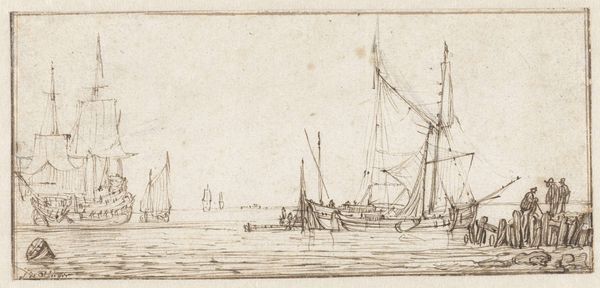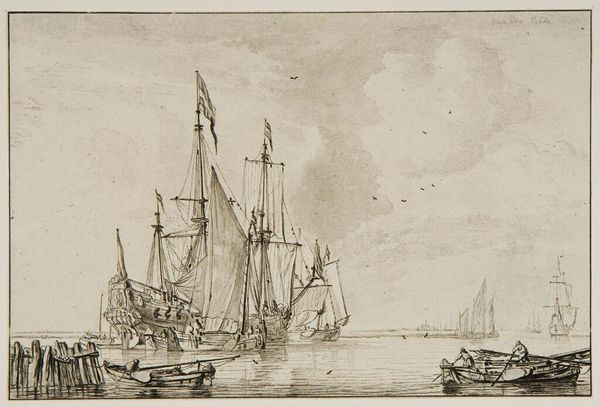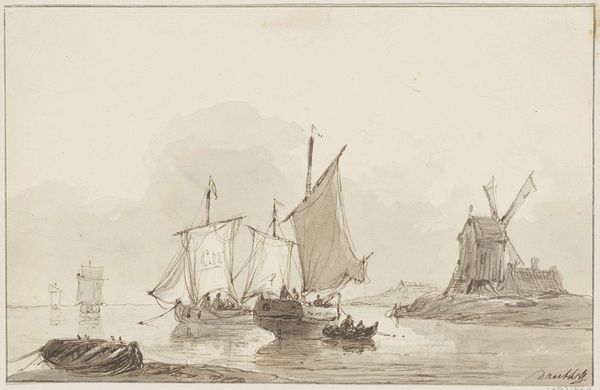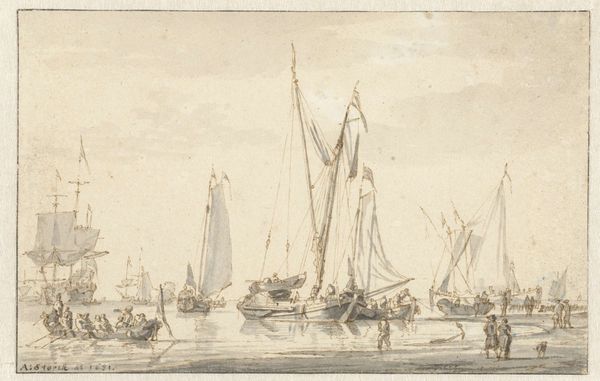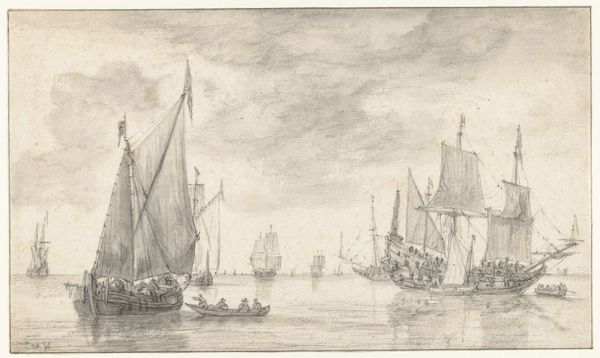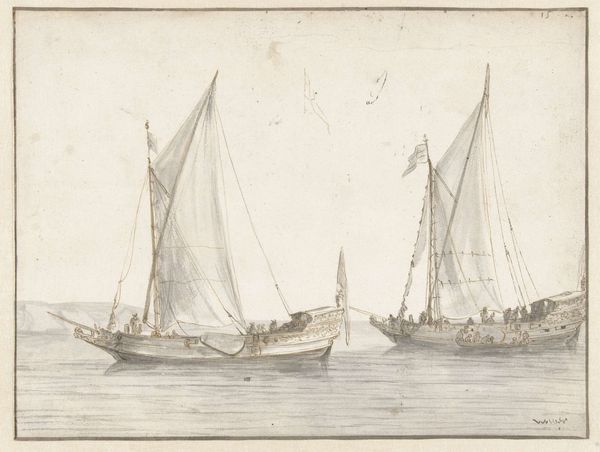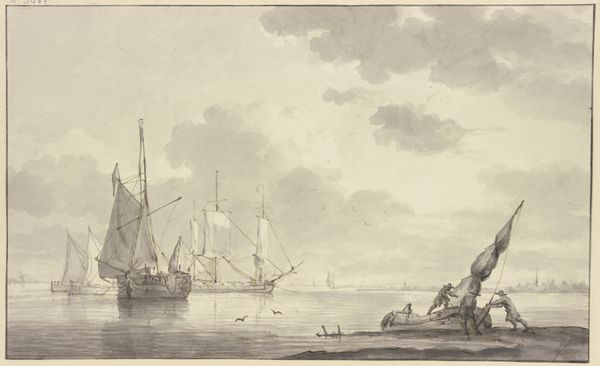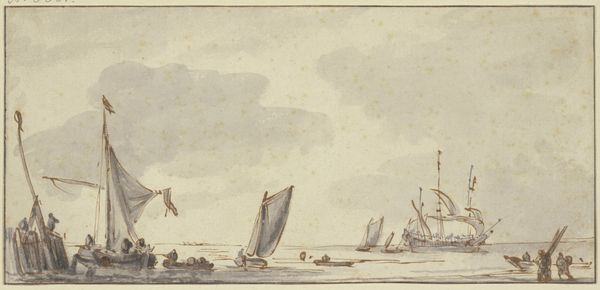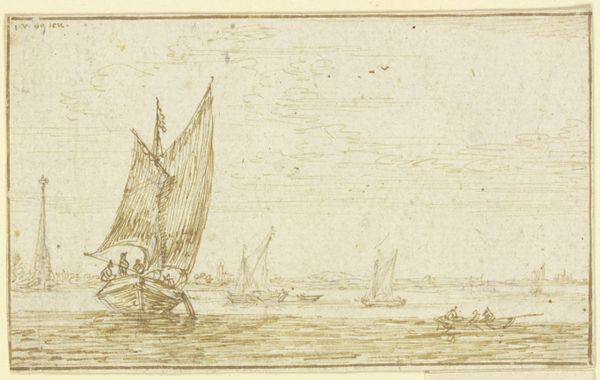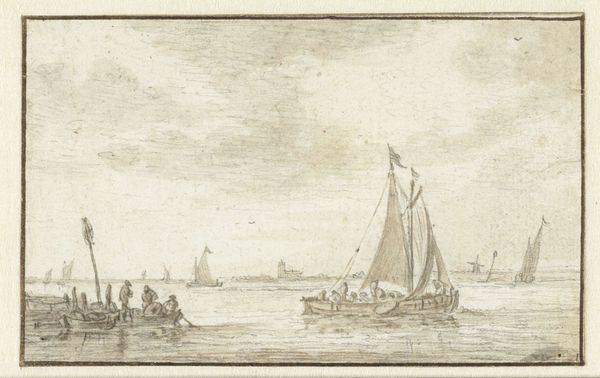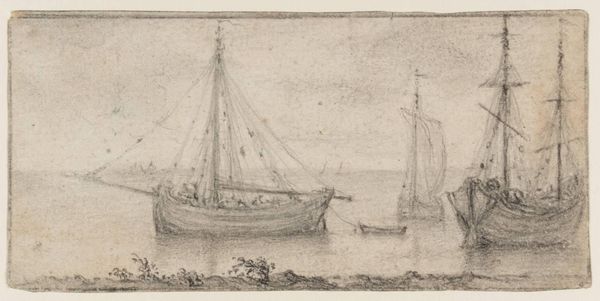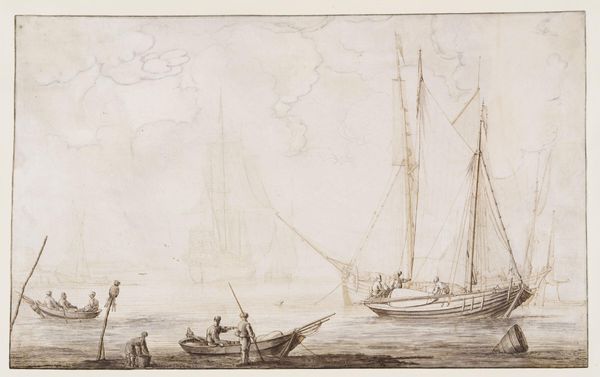
drawing, paper, ink
#
drawing
#
dutch-golden-age
#
landscape
#
paper
#
ink
#
genre-painting
Dimensions: height 92 mm, width 144 mm
Copyright: Rijks Museum: Open Domain
Curator: I’m immediately drawn to the delicacy of the lines, the way the artist uses such minimal means to create a sense of space and atmosphere. It almost feels like a quick sketch, but one that captures the light so perfectly. Editor: Indeed. This artwork is a drawing entitled "Stille zee met enkele boten," which translates to "Still Sea with Several Boats," and was created by Abraham Storck sometime between 1645 and 1710. It employs ink on paper. Curator: Considering its place in the Dutch Golden Age, one can’t ignore the symbolic weight these maritime scenes often carried. The Dutch Republic was, after all, a naval power, and the sea represented both opportunity and risk, reflecting its socio-political landscape. Who was traveling on these boats? For what purposes? Are we to read it as a celebration or a cautionary tale? Editor: The composition, too, reinforces this dichotomy. The large sailing vessels, rendered with such precision, seem stable and powerful, but the smaller boats with the people introduce a certain tension. Note the dark wooden construction—or jetty—that bisects the artwork from its lower-left corner, a visual counterpoint. The semiotic interplay of form and depth is what animates the artwork beyond simple depiction. Curator: Precisely. The clothing of the people shown is especially revealing. In many Golden Age marine paintings, we witness the realities of social hierarchy. However, here the figures appear quite ordinary, suggesting a departure point to consider the roles of individuals beyond their position, possibly involved in local trade and transport. Editor: I find your social read quite compelling. However, focusing solely on that obscures Storck’s technique. The economy of line, the subtle gradations of tone… it is all brilliantly rendered, wouldn't you agree? Curator: Without question. But let us not separate the technical mastery from the historical realities it reflected, for the drawing prompts so many questions about class and labor during a unique era in Dutch maritime history. Editor: Yes, I see how situating the work amidst cultural complexities unlocks further levels of discourse that enhance our aesthetic appreciation. Curator: Ultimately, Storck gives us a contemplative space—both visually appealing and richly meaningful.
Comments
No comments
Be the first to comment and join the conversation on the ultimate creative platform.
